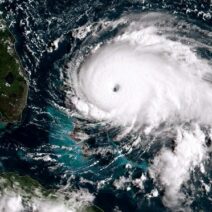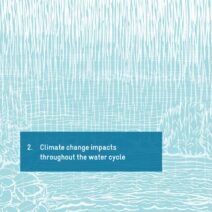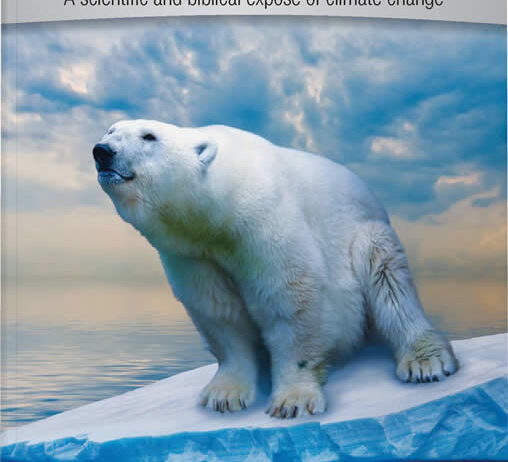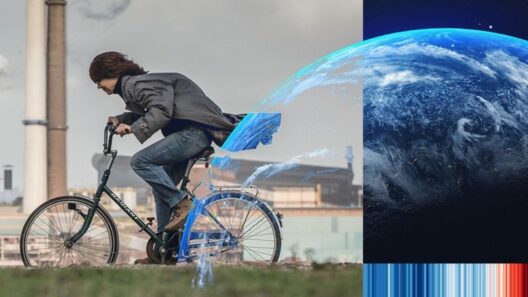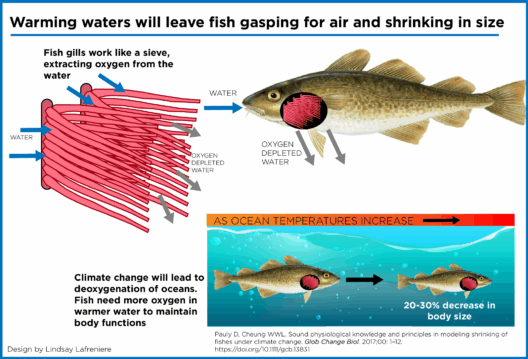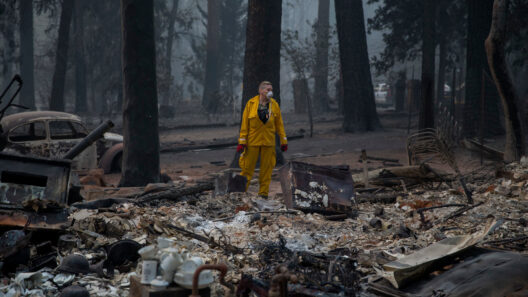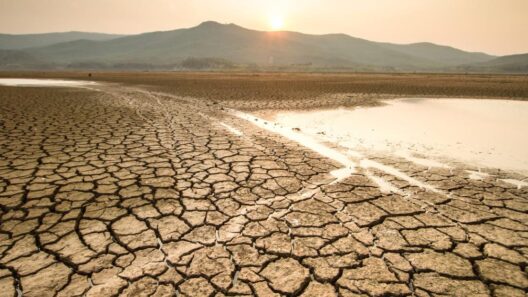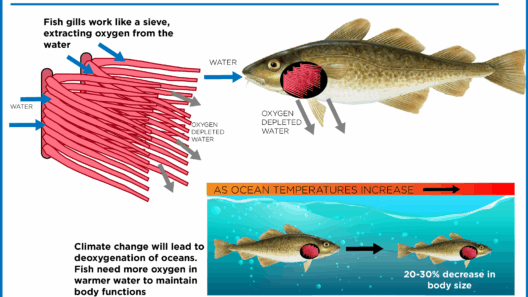In the grand symphony of the Earth’s climate, carbon dioxide (CO2) plays a pivotal role, acting as a conductor that shapes the harmony of our environment. To comprehend the intricate relationship between carbon dioxide and global warming, it is essential to delve into the physics of greenhouse gases, the carbon cycle, and the broader implications of rising CO2 levels.
To commence, let’s first clarify what carbon dioxide is. This molecule is a colorless, odorless gas, a natural component of the Earth’s atmosphere. It exists in trace amounts, yet its influence is profound. Much like a blanket that provides warmth, CO2 retains heat from the sun, a process known as the greenhouse effect. The Earth’s atmosphere works like a cozy room where a certain degree of warmth is crucial for sustaining life.
The greenhouse effect, the primary driver of Earth’s temperature, involves several gases, including water vapor, methane, and nitrous oxide, but carbon dioxide is the most significant contributor to anthropogenic warming. As we engage in activities that burn fossil fuels—such as driving cars, operating factories, and generating electricity—we release previously stored carbon from the earth into the atmosphere, augmenting the natural concentration of CO2.
The intricacies of this process are reminiscent of a delicate scale; on one side, we have the natural emissions of CO2—volcanic eruptions, respiration, and decomposition. On the other side, human-induced emissions tip the scale beyond equilibrium. This aggravation in the carbon cycle has been notably rapid, especially since the onset of the Industrial Revolution, when humanity began to harness fossil fuels to power progress.
As we unravel the question of whether carbon dioxide truly causes global warming, it is paramount to examine the scientific evidence. Hundreds of studies confirm that atmospheric CO2 concentrations have risen dramatically over the past century. The pre-industrial levels fluctuated around 280 parts per million (ppm), but recent measurements have exceeded 410 ppm. This increase correlates with a rise in global temperatures—an alarming trend evidenced by shrinking ice caps, rising sea levels, and increasingly erratic weather patterns.
Picture a pot of water heating on the stove. As carbon dioxide emissions escalate, this metaphorical pot of water reaches higher temperatures. Scientists have documented a global temperature rise of approximately 1.2 degrees Celsius above pre-industrial levels. Not an enormous figure, one might say, but within the context of Earth’s climate systems, even a slight increase can trigger significant changes. Ecosystems become strained, species face extinction, and severe weather events become more frequent and intense.
Moreover, the role of carbon dioxide transcends mere temperature elevation. Its presence can affect ocean acidity, a phenomenon that poses a dire threat to marine life. When CO2 dissolves in seawater, it forms carbonic acid, diminishing the pH of the oceans. This alteration impacts coral reefs and shellfish, undermining the biodiversity that sustains marine ecosystems. The cascading consequences reverberate through food chains; starving marine organisms can result in the collapse of entire ecosystems.
Some skeptics argue that fluctuations in temperature and climate are part of Earth’s natural cycles. While it is true that our planet has undergone numerous climatic shifts over millennia due to natural phenomena such as solar radiation, volcanic eruptions, and changes in orbit, the current trajectory is predominantly driven by human activity. The speed and scale at which we are altering the atmosphere is unparalleled in the geological record.
Addressing this dilemma is no small feat. As society grapples with the realities of a warming planet, various solutions are emerging. Transitioning to renewable energy sources—solar, wind, and hydroelectric—is paramount. These alternatives harness natural forces without exacerbating greenhouse gas emissions. Additionally, reforestation and afforestation initiatives can play a significant role in sequestering carbon dioxide, effectively removing it from the atmosphere and restoring ecosystems that have been disturbed.
Public policy is another critical aspect of combating climate change. Governments around the world are beginning to recognize the urgency of the situation. Initiatives aimed at reducing carbon footprints through regulations, incentives for clean energy adoption, and carbon trading systems have been implemented in various regions. Yet, progress remains uneven; more robust and cohesive global efforts are essential to ensure a collective response to this crisis.
Individual action also holds considerable weight. Every choice—ranging from diet to transportation—can influence carbon emissions. Opting for plant-based meals, utilizing public transport, and minimizing energy consumption can collectively lead to a tangible reduction in CO2 levels. When individuals become proactive custodians of the environment, the ripple effect can catalyze broader societal change.
Ultimately, carbon dioxide is not merely a byproduct of progress; it is an agent of transformation. The intimate dance between humanity and the environment is interwoven with the threads of our decisions, lifestyles, and policies. Recognizing that carbon dioxide does contribute significantly to global warming is the first step in appreciating the urgency of addressing climate change.
As we navigate the complexities of our existence within this fragile ecosystem, it becomes increasingly clear that our actions resonate beyond our immediate surroundings. The tapestry of climate change, woven from emissions and the corresponding effects on our planet, underscores the importance of understanding the dynamics at play. Only through concerted effort can we weave a sustainable future, one with a climate that is suitable for generations yet to come.
